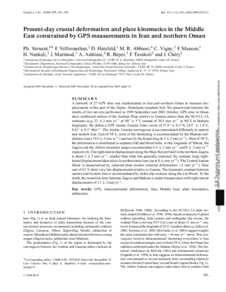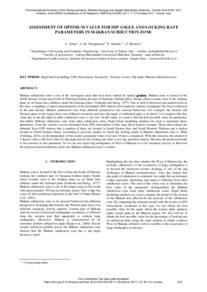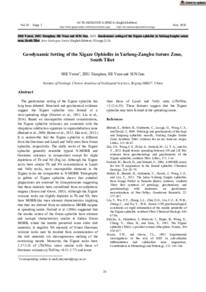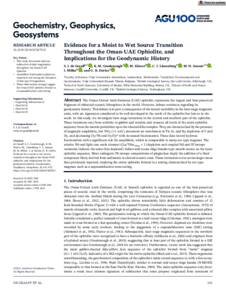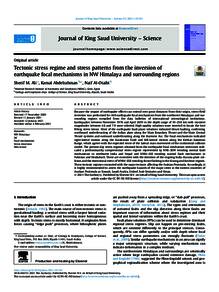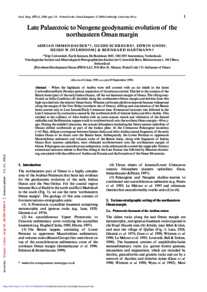Document
Present-day crustal deformation and plate kinematics in the Middle East constrained by GPS measurements in Iran and northern Oman.
Identifier
DOI: 10.1111/j.1365-246X.2004.02222.x
Source
Geophysical Journal International. v. 157, 1, p. 381-398
Contributors
Nilforoushan, F., Author
Hatzfeld, D. , Author
Abbassi, M. R., Author
Vigny, C., Author
Masson, F., Author
Nankali, H., Author
Martinod, J., Author
Ashtiani, A. , Author
Bayer, R., Author
Tavakoli, F. , Author
Chery, J. , Author
Country
United Kingdom.
City
Oxford.
Publisher
Oxford University Press.
Gregorian
2004-04-01
Language
English
Subject
English abstract
A network of 27 GPS sites was implemented in Iran and northern Oman to measure displacements in this part of the Alpine-Himalayan mountain belt. We present and interpret the results of two surveys performed in 1999 September and 2001 October. GPS sites in Oman show northward motion of the Arabian Plate relative to Eurasia slower than the NUVEL-1A estimates (e.g. 22 ± 2 mm yr-1 at N8° ± 5°E instead of 30.5 mm yr-1 at N6°E at Bahrain longitude). We define a GPS Arabia-Eurasia Euler vector of 27.9° ± 0.5°N, 19.5° ± 1.4°E, 0.41° ± 0.1° Myr-1. The Arabia-Eurasia convergence is accommodated differently in eastern and western Iran. East of 58°E, most of the shortening is accommodated by the Makran subduction zone (19.5 ± 2 mm yr-1) and less by the Kopet-Dag (6.5 ± 2 mm yr-1). West of 58°E, the deformation is distributed in separate fold and thrust belts. At the longitude of Tehran, the Zagros and the Alborz mountain ranges accommodate 6.5 ± 2 mm yr-1 and 8 ± 2 mm yr-1 respectively. The right-lateral displacement along the Main Recent Fault in the northern Zagros is about 3 ± 2 mm yr-1, smaller than what was generally expected. By contrast, large right-lateral displacement takes place in northwestern Iran (up to 8 ± mm yr-1). The Central Iranian Block is characterized by coherent plate motion (internal deformation 2 mm yr-1). Sites east of 61°E show very low displacements relative to Eurasia. The kinematic contrast between eastern and western Iran is accommodated by strike-slip motions along the Lut Block. To the south, the transition zone between Zagros and Makran is under transpression with right-lateral displacements of 11 ± 2 mm yr-1.
ISSN
0956-540X
Category
Journal articles

